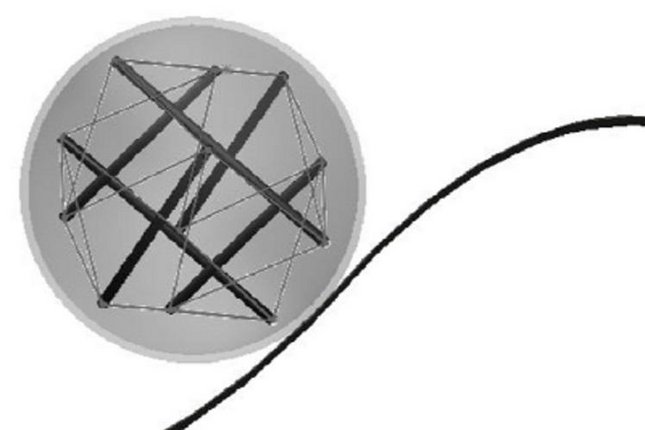
Introduction
Live cells respond to the changes of their physiological environment as well as to the mechanical stimuli occurring in and out of the cell body. It is known that cell directional motion is influenced by the substrate stiffness and topology. The mechanical and structural properties of the extracellular matrix (ECM) play an important role in regulating cell motility and fate. The experimental studies of the human mesenchymal stem cell (hMSC) spreading and differentiation showed that the changes in structure of ECM influences the mechanics of cellular behavior. The modeling of this behavior will help to understand the observed trends in cell spreading and differentiation.
Description
In this Master’s research project, you will use a finite element modeling based on the tensegrity approach to describe the biomechanical behavior of cells. You will investigate the effects of substrate stiffness, topology and prestress on strain energy of a cell by evaluating several substrates with various stiffness, topologies and prestress parameters. Previous studies showed that the internal elastic strain energy of the cell decreases as the substrate stiffness increases. It also depends on the surface topology. As prestress of cell increases, the strain energy increases as well. The change of prestress value does not change behavior pattern of the strain energy: strain energy of a cell will decrease when substrate stiffness increases. These findings indicate that both cell prestress and substrate stiffness influence the cell directional movement. The placement of the cell at different positions along the wavy surface shows that the internal elastic energy is a function of the topological factors. You will model the viscoelastic behavior of a cell subjected to a constant deformation as well. The results will be confronted with experimental results obtained by our group.
This project involves a collaboration with a group in Lehigh University (USA) and is suited for students interested in cell modeling, computational biology, and cell–matrix interactions.
Contact
-
Twan Beerninkds. Thijmen Azizvan den Heuvellaan6971GW Oldeholtpade